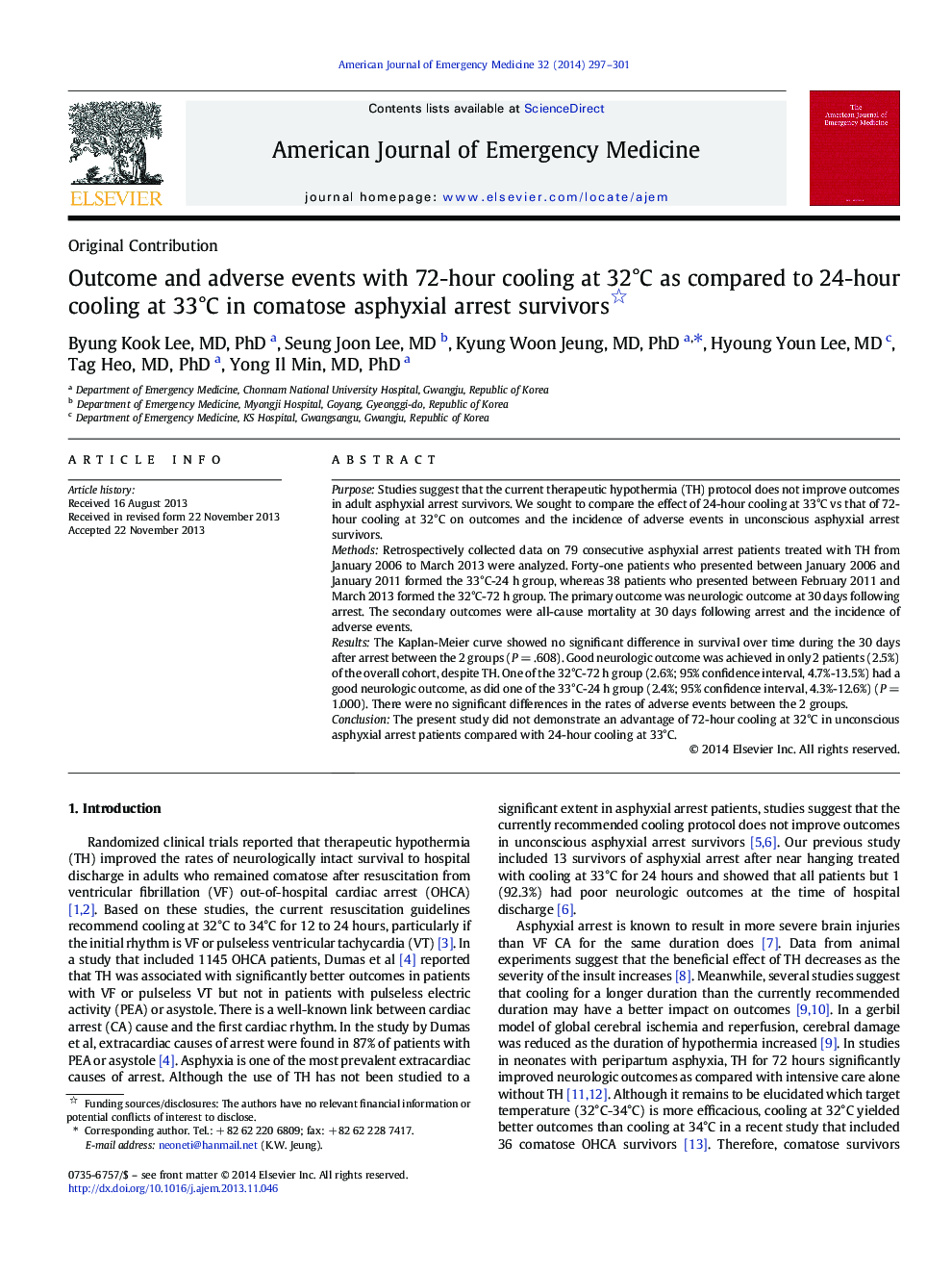| Article ID | Journal | Published Year | Pages | File Type |
|---|---|---|---|---|
| 3223702 | The American Journal of Emergency Medicine | 2014 | 5 Pages |
PurposeStudies suggest that the current therapeutic hypothermia (TH) protocol does not improve outcomes in adult asphyxial arrest survivors. We sought to compare the effect of 24-hour cooling at 33°C vs that of 72-hour cooling at 32°C on outcomes and the incidence of adverse events in unconscious asphyxial arrest survivors.MethodsRetrospectively collected data on 79 consecutive asphyxial arrest patients treated with TH from January 2006 to March 2013 were analyzed. Forty-one patients who presented between January 2006 and January 2011 formed the 33°C-24 h group, whereas 38 patients who presented between February 2011 and March 2013 formed the 32°C-72 h group. The primary outcome was neurologic outcome at 30 days following arrest. The secondary outcomes were all-cause mortality at 30 days following arrest and the incidence of adverse events.ResultsThe Kaplan-Meier curve showed no significant difference in survival over time during the 30 days after arrest between the 2 groups (P = .608). Good neurologic outcome was achieved in only 2 patients (2.5%) of the overall cohort, despite TH. One of the 32°C-72 h group (2.6%; 95% confidence interval, 4.7%-13.5%) had a good neurologic outcome, as did one of the 33°C-24 h group (2.4%; 95% confidence interval, 4.3%-12.6%) (P = 1.000). There were no significant differences in the rates of adverse events between the 2 groups.ConclusionThe present study did not demonstrate an advantage of 72-hour cooling at 32°C in unconscious asphyxial arrest patients compared with 24-hour cooling at 33°C.
